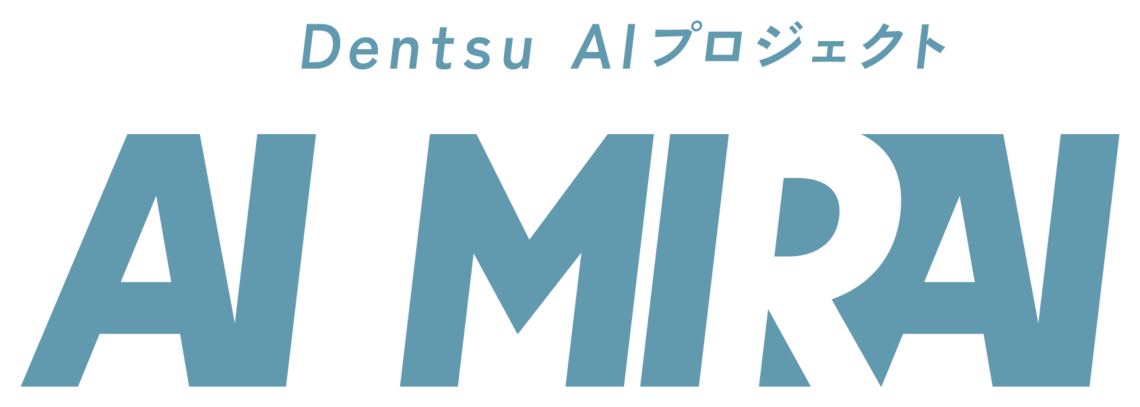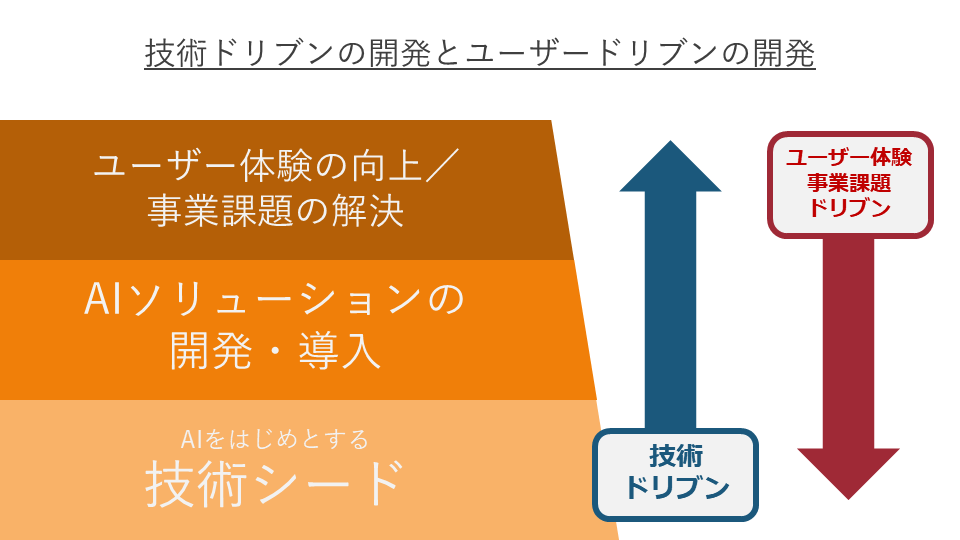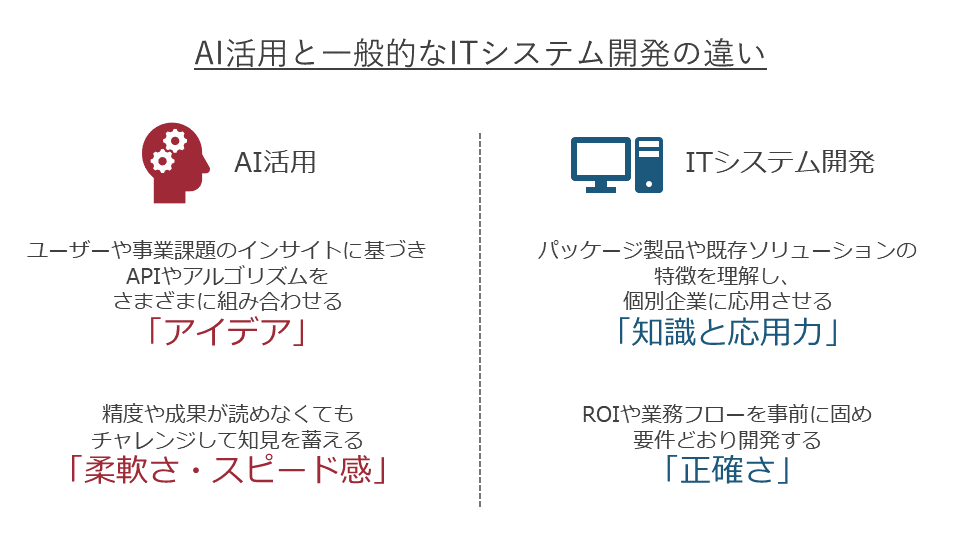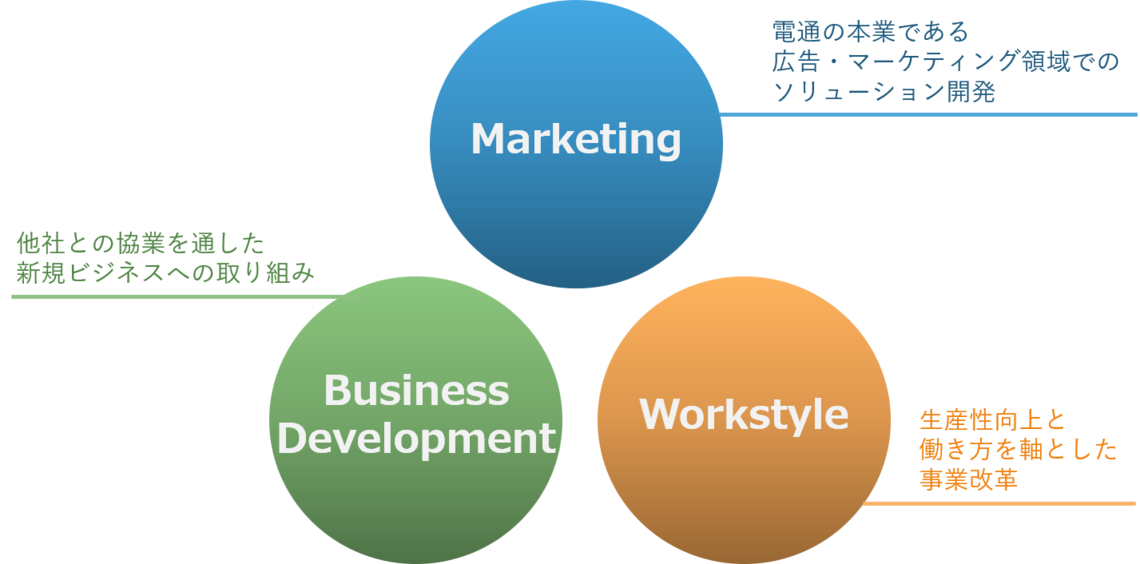"Ah, I wish AI could just handle this kind of work..."
I've been hearing that kind of grumbling more often. The "Third AI Boom," which began in the early 2010s, seems to be continuing even into 2018.
However, the tide is definitely turning. In short, the focus has shifted from "how amazing things AI can do" to "how to effectively utilize AI in business settings." Furthermore, the business application of AI has a completely different nature from traditional IT system development, demanding a shift in thinking.
Over the next six installments, we will introduce Dentsu Inc.'s perspective and initiatives regarding the ever-expanding field of 'AI' through actual development projects. In this first installment, we will discuss the business activities of Dentsu Inc.'s integrated project team 'AI MIRAI,' formed in 2017, and the future outlook for the business application of AI.
What is Dentsu Inc.'s "AI MIRAI"?
My apologies for the late introduction. I'm Takuya Kodama, overseeing AI MIRAI.
AI MIRAI is a project team formed as a driving force to advance technology and solution development from various angles, leveraging the unique perspective of Dentsu Inc. as a marketing company.

As detailed later, we aim to propose practical AI applications to society and clients, focusing on three key pillars: "Marketing," "Business Development," and "Workstyle."
AI MIRAI does not have pure "technologists." Instead, it brings together over 40 members active across a wide range of fields—from digital, marketing, mass media, and creative work (the core business of an advertising agency) to workstyle reform and human resources. Each member earnestly considers how AI can be leveraged within their own domain, collaborates with partners to understand its capabilities and limitations, and serves as a kind of "practical knowledge" collection engine, exploring how it can be applied to business.
So why did Dentsu Inc. launch such a project? The background relates to changes in the environment surrounding AI.
The business application of AI hinges on "ideas" and "flexibility"
Comparing the current environment surrounding AI with that of the late 1990s when the internet entered the business arena, or the 2000s with the advent of "cloud" and "big data," reveals two major differences.
The first is the trend toward "openness."
Today, not only major players like IBM Watson and Microsoft Azure, but also various algorithms and solutions related to AI and machine learning are readily available as open source or APIs. Furthermore, machine learning frameworks like Chainer, TensorFlow, and Keras, along with high-quality datasets such as WordNet, ImageNet, and Wikipedia, have been established, significantly lowering the technical barrier. Users, including businesses, can now begin developing solutions more quickly than with traditional IT system development. They can do this by appropriately combining (i.e., mashup) these resources, even without specialized knowledge.
What becomes essential here is not a "technology-driven" mindset focused on how to utilize technical seeds for business, but rather a "user experience/business challenge-driven" mindset. Ideas such as "What technologies should be combined to solve this business challenge?" and "How can we enrich the customer experience?" become the starting point for development.
The second point is the inherent unpredictability of AI.
Even when AI systems are trained on data according to given specifications, achieving the targeted accuracy is highly uncertain. It's often impossible to predict outcomes or ROI at the outset. Therefore, rather than fixing specifications and ROI before starting development, the key is to embrace a mindset where "failure is also an outcome." Development should proceed flexibly and broadly, incorporating Proof of Concept (PoC) and feasibility studies.
As outlined above, the essential qualities and mindset required for AI development and utilization differ significantly from conventional IT system development in the following two aspects:
- Beyond technological knowledge, the ability to generate "ideas" inspired by user experience and business challenges
- Flexibility and speed to try various development approaches amid uncertainty
As you've likely noticed by now, AI development and utilization may be closer to marketing initiatives than traditional IT system development. Accurately capturing insights from user experiences and business challenges, then solving problems with broad ideas and a sense of urgency... What's needed for future AI utilization might just be a "marketing mindset."
That's precisely why we believe that by combining the insights into client challenges and consumers accumulated by Dentsu Inc. as a marketing company with the practical knowledge gained through AI MIRAI, we can design and propose more flexible, practical AI applications.
The Three Pillars of AI MIRAI
Let us explain the three key areas where AI MIRAI focuses its efforts.
1. Marketing
Solution development in Dentsu Inc.'s core advertising and marketing domain. This category includes "AICO," the AI copywriter featured in our serialized Web Dentsu Report, and "SHAREST," the viewership prediction AI already announced for release. We explore AI application opportunities broadly, leveraging Dentsu Inc.'s strengths in digital, mass media, and creative domains. Additionally, we actively leverage the expertise and networks cultivated in these areas to tailor AI solutions to our clients' specific challenges.
- AI Copywriter " AICO "
- Viewership Prediction AI " SHAREST "
- AICM Planner
- Future Trend Prediction Algorithm
- Advanced News Analysis Tool Development
2. Business Development
We actively collaborate with other companies, aiming to create new businesses beyond the confines of the marketing domain. We are already promoting business development by combining AI with the data and assets of various companies, including collaborations with media companies like Nippon Cultural Broadcasting, which has already released announcements.
3. Workstyle
We aim for business transformation driven by productivity improvements and evolving workstyles. By embedding AI into RPA (Robotics Process Automation) and standardizing non-routine data, we seek to enhance operational support and elevate the value of business processes, pioneering transformative change. While driving transformation at Dentsu Inc., we also leverage this expertise to solve client challenges.
- AI Transfer of Routine Tasks / Advanced RPA
- Automated Business Document Sorting Algorithm
- AI-Powered Website Crawling
AI MIRAI has already undertaken over 25 development projects across these three domains, expanding its expertise and network through practical business applications.
"We have this challenge—could AI help solve it?"
"We tried introducing AI, but it doesn't seem to be improving the user experience..."
"We have this data—can we use AI to turn it into valuable business opportunities?"
We've established a system to address a wide range of such inquiries.
Sorry for sounding like a sales pitch.
I'll wrap up my introduction here. Starting next time, we'll introduce actual development cases from AI MIRAI and gradually open the doors to the future—just a little bit—that AI is unlocking.






